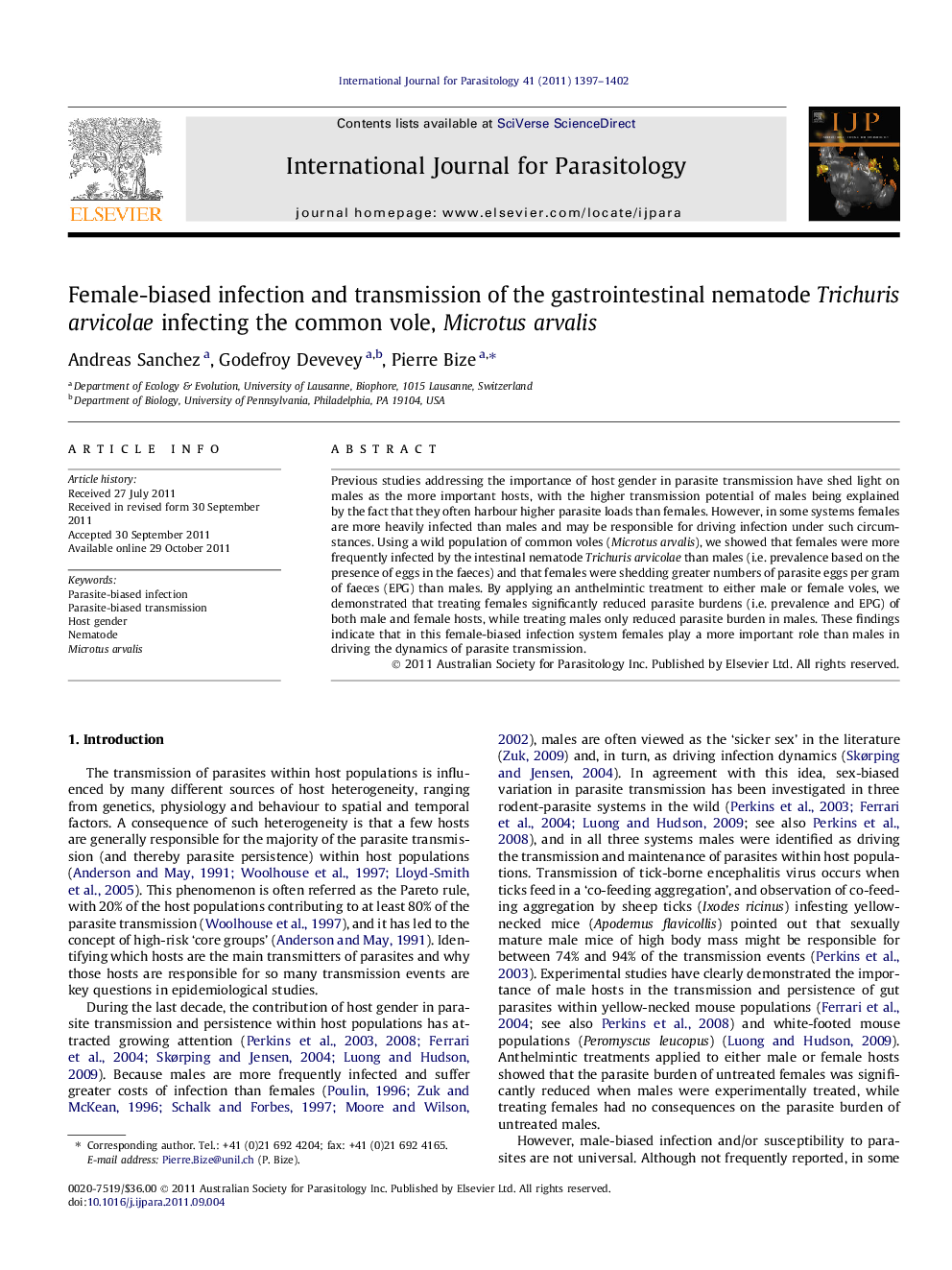| Article ID | Journal | Published Year | Pages | File Type |
|---|---|---|---|---|
| 2436297 | International Journal for Parasitology | 2011 | 6 Pages |
Previous studies addressing the importance of host gender in parasite transmission have shed light on males as the more important hosts, with the higher transmission potential of males being explained by the fact that they often harbour higher parasite loads than females. However, in some systems females are more heavily infected than males and may be responsible for driving infection under such circumstances. Using a wild population of common voles (Microtus arvalis), we showed that females were more frequently infected by the intestinal nematode Trichuris arvicolae than males (i.e. prevalence based on the presence of eggs in the faeces) and that females were shedding greater numbers of parasite eggs per gram of faeces (EPG) than males. By applying an anthelmintic treatment to either male or female voles, we demonstrated that treating females significantly reduced parasite burdens (i.e. prevalence and EPG) of both male and female hosts, while treating males only reduced parasite burden in males. These findings indicate that in this female-biased infection system females play a more important role than males in driving the dynamics of parasite transmission.
Graphical abstractFigure optionsDownload full-size imageDownload high-quality image (88 K)Download as PowerPoint slideHighlights► Infection by the intestinal nematode Trichuris arvicolae is greater in female than male common voles. ► Anthelmintic treatment of female voles reduced infection of female and male voles. ► Anthelmintic treatment of male voles reduced infection in male voles only. ► Evidence of female-biased transmission of T. arvicolae from a wild population of common voles.
